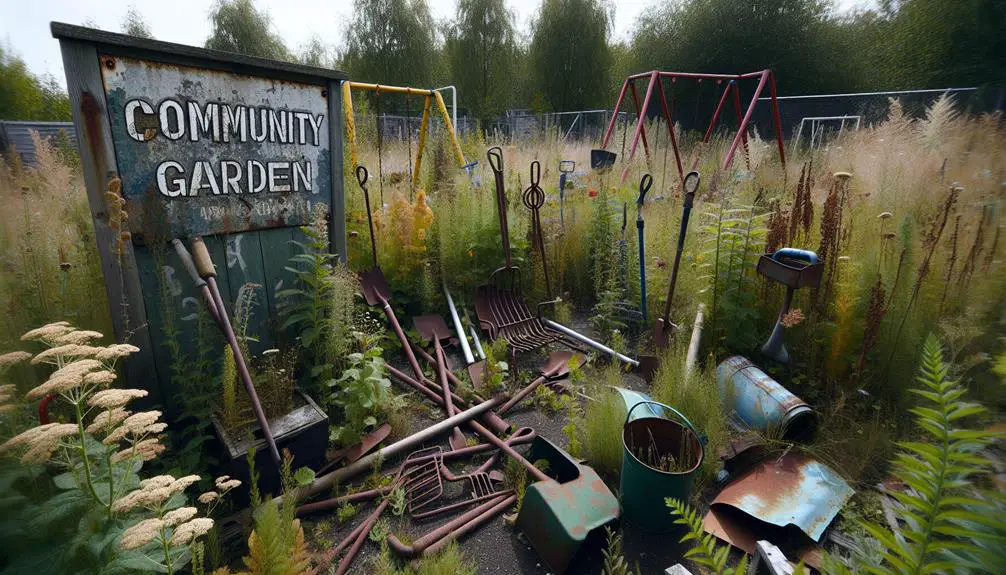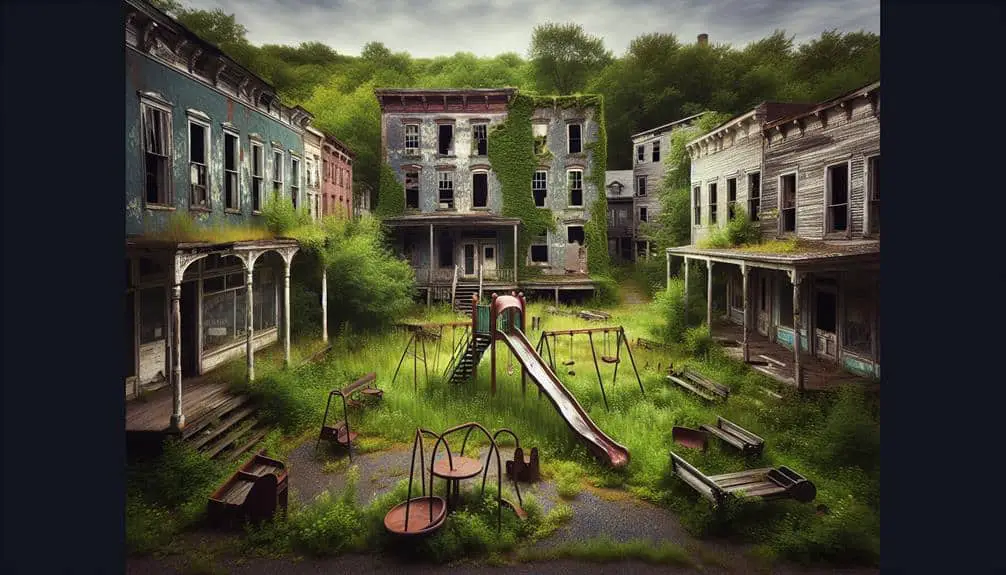Explore the remnants of failed communal living experiments in America to uncover the challenges faced by utopian communities. Discover how clashes between ideals and realities, internal power struggles, and economic sustainability issues led to the downfall of settlements like New Harmony, Oneida Community, Amana Colonies, Fruitlands, and Llano del Rio. Understand the factors that contributed to these failures, from internal conflicts to external pressures. Learn how preserving the legacy of these failed utopias through historical documentation, educational programs, artifact preservation, community engagement, and ongoing research helps us understand the complex dynamics of communal living experiments in America's history.
Key Points
- Visiting New Harmony, Indiana to explore Robert Owen's failed utopian settlement.
- Exploring the remnants of the Oneida Community in New York and its complex marriage practices.
- Touring the Amana Colonies in Iowa to learn about German Pietists' communal living.
- Investigating Fruitlands in Massachusetts, founded by Bronson Alcott and Charles Lane.
- Examining the remnants of Llano del Rio in California, disbanded during the Great Depression.
Origins of Failed Utopian Communities
The origins of failed utopian communities can be traced back to the 19th century, where idealistic visions clashed with practical realities, leading to inevitable challenges and eventual collapse. One of the primary causes behind the failure of these communities was the discrepancy between the grand ideals proposed by their founders and the actual implementation of these ideals within the communal setting. Many of these communities struggled with internal power struggles, conflicting ideologies, and the difficulty of sustaining a cooperative environment over time.
The impact of these failed utopian communities was significant. Not only did they highlight the complexities of human nature and the challenges of communal living, but they also served as cautionary tales for future experiments in communal living. The collapse of these communities often left behind disillusioned members who'd invested their hopes and efforts into the utopian vision, only to be faced with the harsh realities of communal life. Ultimately, these failed experiments underscored the delicate balance required to maintain a successful communal living arrangement.
Notable Failed Experiments in Communal Living
Originating in the mid-19th century, numerous communal living experiments in America have garnered attention for their ambitious yet ultimately unsuccessful endeavors. Some notable failed experiments in communal living can be attributed to cult leader dynamics, where charismatic leaders exerted excessive control over their followers, leading to the downfall of the community. Cult leader dynamics often created a toxic environment that stifled individual freedom and critical thinking, ultimately contributing to the failure of the communal living experiment.
Furthermore, economic sustainability played a significant role in the demise of many communal living ventures. Without a stable economic foundation, these communities struggled to meet their basic needs and maintain essential infrastructure. The lack of financial planning and resources led to internal conflicts and ultimately the collapse of the communal living experiment.
Abandoned Utopian Settlements Across America
Amidst the remnants of unsuccessful communal living experiments lie numerous abandoned utopian settlements across America, echoing the aspirations and eventual disillusionment of those who sought to create ideal societies. These forgotten histories are a proof to the human desire for freedom and community, yet they also reveal the complexities and challenges inherent in such endeavors. The landscape is dotted with abandoned structures that once housed dreams of a better way of living, now standing as silent witnesses to past visions of utopia.
- New Harmony, Indiana: Founded by Robert Owen in 1825, aimed to create a self-sufficient community but dissolved due to internal conflicts.
- Oneida Community, New York: Known for complex marriage practices and communal living, dissolved after internal strife and external pressures.
- Amana Colonies, Iowa: Established by German Pietists, shifted from communalism to private ownership.
- Fruitlands, Massachusetts: Founded by Bronson Alcott and Charles Lane, failed due to harsh living conditions and disagreements.
- Llano del Rio, California: Socialist community that disbanded during the Great Depression, leaving behind ruins of their cooperative living experiment.
Factors Contributing to Communal Living Failures
Numerous factors, including internal conflicts, external pressures, and shifting ideologies, have played pivotal roles in the failures of communal living experiments across America. Social dynamics within these communities often led to power struggles, disagreements over resource distribution, and clashes of personal beliefs. These internal conflicts created rifts that weakened the communal bond essential for sustainability.
External pressures, such as societal norms and government regulations, also contributed to the downfall of many communal living ventures. The inability to navigate these external forces effectively strained the communities, hindering their growth and stability.
Economic sustainability posed another significant challenge. While communal living aimed to promote shared resources and reduce individual costs, managing finances collectively proved to be complex. Discrepancies in contributions, differing views on labor distribution, and the lack of a structured economic system often led to financial instability.
Preserving the Legacy of Failed Utopias
Preserving the legacy of failed utopias requires a nuanced examination of the contributing factors and lasting impacts left by these communal experiments in America. When looking to uphold the lessons learned from these failed communal living endeavors, several key aspects come into play:
- Historical Documentation: Archiving the history of these utopian communities is crucial to guarantee that their stories and experiences aren't lost to time.
- Educational Programs: Developing educational initiatives to teach future generations about the successes and failures of these utopias can provide valuable insights.
- Preservation of Artifacts: Safeguarding artifacts and structures from these communities can offer tangible connections to the past for people to learn from.
- Community Engagement: Involving the local community in legacy preservation efforts can foster a sense of shared responsibility and ownership.
- Continued Research: Conducting ongoing research into the social, economic, and political dynamics of failed utopias can deepen our understanding of communal living experiments in America.
Frequently Asked Questions
What Impact Did Failed Utopian Communities Have on the Surrounding Local Economies?
When failed utopian communities disintegrate, local economies often suffer. Businesses that relied on communal members for revenue struggle. Social dynamics shift as residents disperse, impacting the area's culture and resources. The economic repercussions can be significant.
How Did the Gender Dynamics Within Failed Communal Living Experiments Contribute to Their Downfall?
When analyzing gender dynamics within failed communal living experiments, it becomes evident how social hierarchies shaped daily interactions. Unequal power distribution based on gender roles often led to discord, highlighting the need for equitable structures to sustain communal living.
Are There Any Modern-Day Movements or Communities That Draw Inspiration From These Failed Utopian Settlements?
In the heart of today's society, you'll find echoes of past communal dreams. Modern movements draw inspiration from failed utopian settlements, shaping new visions of communal living. Their struggles guide the way forward.
What Role Did Government Intervention Play in the Failures of Communal Living Experiments?
Government intervention had a profound impact on communal living failures. Regulations, funding cuts, and land disputes disrupted local economies and communal structures. Gender dynamics were influenced by external pressures. Descendants' memories often highlight the challenges faced due to government involvement in these experiments.
How Have the Descendants of Individuals Who Were Part of Failed Utopian Communities Chosen to Remember and Honor Their Ancestors' Experiences?
When reflecting on ancestral legacies, descendants of failed communal experiments honor their past through communal memories. They preserve stories, artifacts, and values, ensuring the experiences of their ancestors remain relevant and respected in contemporary narratives.



